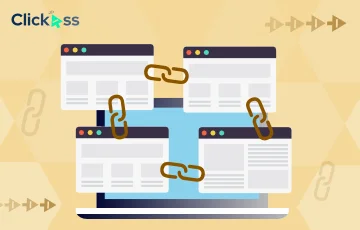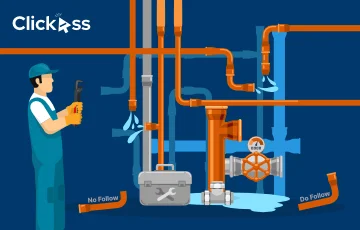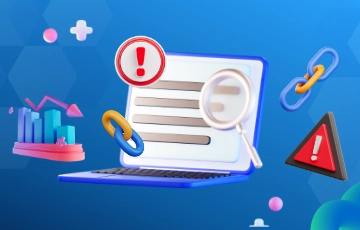
Key Takeaways
- Niche-driven SEO targets specific audience segments for higher engagement.
- Conduct thorough search volume analysis to identify valuable keywords.
- Competitor analysis and technical SEO are crucial for strategy.
- Create high-quality, niche-specific content to boost rankings.
- Develop a robust internal and external link profile.
The keyword ‘niche driven SEO’ has a niche target audience. And that makes this article the epitome of SEO inception.
What if I asked you what your niche is?
It could be anything you like doing and helps you stand out, succeed or find contentment.
For instance, I want to say, “My niche is SEO.”
Wake me up at 3 AM, and I can passionately debate SEO.In other words, a niche is a particular interest of your target audience that you can monetize and make the customer experience a breeze.
What is Niche Driven SEO?
Niche-driven SEO is a specialized approach to search engine optimization that focuses on targeting specific, narrow markets.
Unlike broad SEO strategies, niche-driven SEO hones in on a particular segment or audience, using tailored keywords and content to attract highly relevant traffic.
This approach involves conducting niche keyword research to identify terms and phrases that your target audience is searching for.
By creating focused SEO campaigns and optimizing content around these niche keywords, you can improve your visibility and authority within your specific market.
Additionally, niche-driven SEO often includes building niche-targeted backlinks to enhance your site’s credibility and rank higher in search engine results.
In essence, it’s about becoming the go-to resource for a particular niche, thereby attracting a dedicated and engaged audience.
“Commit to a niche; try to stop being everything to everyone.” – Andrew Davis
Example:
A brand targeting office ergonomics can focus on keywords like “orthopedic office chair,” “orthopedic office chair for back pain,” or “best ergonomic chairs for back pain.” This approach helps attract a specific audience looking for solutions tailored to their needs, making it easier to rank higher and draw relevant traffic.
Let me explain this with a real-life example.
By focusing on “ergonomic and back pain solutions,” Relax The Back successfully competes with giants like Herman Miller, which targets broader keywords like “office chair.”
This niche positioning allows Relax The Back to rank first for niche keywords such as “orthopedic office chair,” giving them a competitive edge in their specific market.

Importance of Niche Driven SEO
1. Targeted Traffic
Niche-driven SEO helps you attract highly targeted traffic.
By focusing on specific keywords related to your niche, you draw visitors who are genuinely interested in your offerings.
This results in higher engagement and a more relevant audience.

“Today it’s not about ‘get the traffic’—it’s about ‘get the targeted and relevant traffic.’” – Adam Audette
2. Lower Competition
Operating within a niche means facing less competition compared to broader markets.
This makes it easier to rank higher on search engine results pages (SERPs), giving you a competitive edge.
Example: A handmade jewelry brand targeting eco-conscious consumers can rank higher for “sustainable handmade jewelry,” reducing competition with broader jewelry markets.
3. Higher Conversion Rates
Visitors coming through niche keywords are more likely to convert into customers.
These users are actively searching for specific solutions that your product or service offers, leading to higher conversion rates.
Example: A fitness app tailored for seniors will have higher conversion rates from searches like “fitness app for seniors,” as users are looking for age-specific solutions.
4. Increased Relevance
Niche-driven SEO ensures your content is highly relevant to your audience.
By addressing specific needs and pain points, you can better satisfy user intent and improve your website’s overall relevance and user experience.
Example: A blog about gluten-free baking will attract a dedicated audience searching for “gluten-free cake recipes,” ensuring high relevance and user engagement.
5. Establishing Authority
Focusing on a niche allows you to establish your brand as an authority within that specific area.
Producing high-quality, niche-specific content positions your company as a trusted resource, fostering credibility and trust.
Emphasizing E-E-A-T (Expertise, Authoritativeness, and Trustworthiness) is crucial in building a strong reputation.
By demonstrating deep knowledge and reliability in your niche, you can gain the confidence of your audience and improve your search engine rankings.
Example: A SaaS platform providing analytics for e-commerce stores can publish detailed reports on “e-commerce analytics trends,” establishing authority in that niche.
6. Cost-Effective, Long-Term Strategy
Niche SEO is a cost-effective strategy that yields long-term benefits.
With less competition and more targeted efforts, you can achieve sustainable growth without the high costs associated with broader SEO campaigns.
Example: An online store selling rare vinyl records can focus on “vintage vinyl records,” maintaining cost-effective and sustainable SEO efforts.

7. Building a Loyal Customer Base
By catering to a specific niche, you can reach and build a loyal customer base.
Your audience will appreciate the tailored content and solutions, leading to stronger customer relationships and repeat business.
Example: A pet food company offering organic, breed-specific diets will build a loyal customer base by focusing on “organic dog food for small breeds.”
Niche Driven SEO vs. Traditional SEO
Aspect | Niche Driven SEO | Traditional SEO |
Focus | Specific segment or audience | Broader market |
Keywords | Tailored to niche | Generalized |
Traffic | Highly relevant, targeted traffic | Wide, general traffic |
Competition | Lower | Higher |
Conversion Rates | Higher | Lower |
Cost-Effectiveness | More cost-effective | Often less cost-effective |
Strategy | Targeted, precise | Generalized, broad |
Ideal for | Specialized markets | General markets |
By understanding the differences between niche-driven SEO and traditional SEO, you can better appreciate the unique advantages of targeting a specific market.
Now, let’s explore some effective niche-driven SEO strategies that can help your niche business thrive.
12 Proven Niche SEO Strategies to Boost Traffic and Revenue
1. Create Buyer Personas
Creating detailed buyer personas is crucial for effective niche-driven SEO.
These personas represent your ideal customers, detailing their demographics, interests, pain points, and online behaviors.
By understanding who your target audience is, you can tailor your content and SEO strategies to meet their specific needs.
For instance, if your SaaS company offers legal case management software like MyCase, you might create a persona like “Solo Attorney Alex.”
- Age: 45 years old
- Profession: Independent attorney
- Challenges: Managing case files, tracking billable hours, and staying organized amidst a busy schedule
- Content Preferences: Blog posts on time management for solo attorneys, eBooks on best practices for case file organization, and webinars on how MyCase simplifies billing and document management
By targeting your SEO efforts towards the unique needs and interests of Solo Attorney Alex, you can attract a highly relevant audience and enhance engagement and conversion rates.
2. Conduct Search Volume Analysis of Your Niche
To boost your organic traffic for a niche service or product, start by determining the volume of search terms in your industry.
This will help you understand the people genuinely searching for your product or service and recognize specific phrases that you should target.
For this, you need to research the volume of the phrases you are getting impressions for or looking to rank for.
You may ask, “How do we determine the niche search volume? Is there a niche search tool for it?” The answer is “Yes.”
Firstly, Google’s Keyword Planner is an excellent tool for analyzing search metrics and historical data to determine the volume of your targeted search queries.
The second is the Keywords Everywhere Chrome extension, which determines search volume, related keywords, etc., directly with your search query.
Lastly, there’s the Keywords Explorer tool from AHREFs—an excellent alternative.
Integrating your website or landing page with AHREFs allows you to check the volume of various search terms.
Let’s look at the example of one of the best niches for SEO, a SaaS product called Event Staff Scheduling Software.
Keyword Difficulty: 19, indicating a moderate level of competition.
Search Volume: 150 searches per month.
Global Search Volume: 400, showing interest from various countries.
This data shows good potential considering the product plan costs.
According to SHNO, with a monthly subscription model, the product has a revenue potential of $1,000 – $3,000.

3. Finding Niche Keywords to Target for SERP Dominance
“If you don’t have a long-tail SEO strategy, you’re missing out.” – Aleh Barysevich
To maximize your niche-driven SEO efforts, you need to target specific keywords that can significantly improve your product’s reach and drive traffic to your website.
To achieve this, research keywords with low keyword difficulty and higher search volume.
The logic is simple: targeting low-volume keywords won’t boost your search discovery or bring significant traffic.
However, niche keywords can sometimes be too specific, leading to lower volume results.
This can be confusing, and you might end up using general keywords that are highly competitive, making it difficult for your site to reach its potential audience.
So, how do you tackle this? Blend keywords with both high and low volumes to avoid missing out on ranking opportunities.
Here’s an example of the Nomad List.

Take a look at the results from Ahrefs. These keywords have low keyword difficulty (KD) and high volume.
In the highlighted red blocks above, the first block lists the keywords, and the second block shows the traffic these keywords brought to Nomad List.
“How much traffic?” you ask.
By finding niche keywords and creating location-specific pages like “Best Places to Live in Europe,” they are generating almost 45K in monthly organic traffic.
4. Strategize Keyword Specificity for Effective SEO
Balancing keyword specificity is crucial for effective niche-driven SEO.
Different stages of the buyer’s journey—
Top of the Funnel (TOFU), Middle of the Funnel (MOFU), and Bottom of the Funnel (BOFU)—require varying levels of keyword specificity to match search intent.
For TOFU, broader keywords attract a wide audience
For MOFU, more specific keywords engage users seeking detailed information.
For BOFU, highly specific, intent-driven keywords convert ready-to-purchase users.
For example, if you run a specialty coffee subscription service, use TOFU keywords like “gourmet coffee beans,” MOFU keywords like “coffee subscription benefits,” and BOFU keywords like “buy best coffee subscription.”
This approach ensures you capture potential customers at all stages of their journey.
5. Understanding Competitors in Your Niche
Understanding your competition is essential for successful niche-driven SEO.
Start by identifying your main competitors and analyzing their SEO strategies.
Look at the keywords they are targeting, the type of content they produce, and their backlink profiles. This will give you insights into what works in your niche and where there are opportunities for improvement.
For example, Scrubbers Dog Wash, a specialized dog washing service, competes with larger chains like Petco, Petsmart, and Scenthound.

By conducting a content gap analysis, Scrubbers Dog Wash can identify keywords that these competitors rank for but they don’t.
This might include long-tail keywords related to specific dog grooming tips or local pet care events.

By finding these gaps, you can create content that addresses unmet needs in your niche, attracting more targeted traffic and improving your search rankings.
6. Work on Creating Niche-Specific Content
Creating niche-specific content is essential for engaging your target audience and improving your SEO rankings.
Tailor your content to address the unique needs and interests of your niche market.
This approach ensures that your audience finds your content valuable and relevant, increasing the likelihood of higher engagement and conversions.
To get started, conduct thorough research on your niche topics and keywords. Create a content calendar that includes blog posts, videos, and infographics tailored to your niche.
Focus on providing in-depth, high-quality information that solves specific problems or answers common questions within your niche.
One of the best niche products in cosmetics for SEO is the Canadian nail polish brand Holo Taco.
They have achieved their traffic goals with a successful video series. By creating a YouTube channel and regularly adding new ‘How-To’ videos, they offer tutorials on creating various nail looks.
This strategy not only showcases their products but also provides valuable content to their audience, enhancing their content strategy.
By following a similar approach, you can attract your ideal audience and establish your brand as an authority in your niche.
7. Optimizing On-Page SEO
On-page SEO optimization is essential for improving your website’s visibility in search engines.
Focus on using niche-specific keywords naturally within your content, meta tags, headers, and URLs. Ensure your content is high-quality, informative, and tailored to your target audience.
Additionally, optimize your images with alt text, improve your site’s internal linking structure, and enhance user experience by making your website mobile-friendly and fast-loading.
8. Perform Technical SEO
To excel in your niche market, implementing technical SEO is crucial.
Here’s how optimizing these elements can give you a competitive edge:
1. XML Sitemaps:
A sitemap helps search engines find, crawl, and index all your website’s content.
It’s a map of your website that guides search engines to your important pages, ensuring your niche-specific content is easily discoverable.
2. Site Architecture:
The perfect site architecture resembles a pyramid. Starting from the homepage at the top, it spreads into other sections, followed by subcategories. At the bottom, there are individual web pages.
This structure helps search engines understand the hierarchy and relationship of your content, making it easier for users to navigate and find niche-specific information.
3. Duplicate Content:
Your content must be fresh and original. Plagiarized or duplicate content can be penalized by Google’s algorithm, negatively impacting your site’s rankings.
Unique, high-quality content helps you stand out in your niche.
4. 404 Pages and 301 Redirects:
There shouldn’t be any 404 errors, i.e., ‘Page Not Found’. If there are any broken links, they must be redirected to appropriate pages using 301 redirects to ensure a seamless user experience, keeping visitors engaged with your niche content.
5. Regular Audits:
Regularly audit your site for issues like broken links, duplicate content, and slow page speeds.
Addressing these issues promptly ensures that your website remains user-friendly and search engine-friendly, which is vital in a competitive niche market.
6. Structured Data Markup:
Implement structured data markup to help search engines better understand your content, improving the chances of appearing in rich snippets.
This visibility can set you apart from competitors in your niche.
7. Security:
Ensure your website is secure with HTTPS, which can also positively affect your rankings. A secure site builds trust with your audience, which is crucial for maintaining a competitive edge.
By focusing on these technical SEO elements, you ensure that search engines can efficiently crawl and index your website.
This comprehensive optimization helps you stay ahead of the competition within your niche industry, attracting more relevant traffic and improving overall site performance.
9. Leveraging Local SEO for Niche Businesses
Local SEO is crucial for niche businesses aiming to attract customers in specific geographic areas.
Start by optimizing your Google My Business profile with accurate information and relevant keywords.
Encourage satisfied customers to leave positive reviews, as they significantly impact local rankings.
Create localized content that addresses the needs and interests of your local audience.
For example, if you run a niche bakery, write blog posts about local events and how your bakery participates in them. Use local citations, forum posting, and backlinks from local websites to boost your authority.

10. Build Niche Driven Backlinks
“The best source of a link is a website that is both considered authoritative and relevant to your website.” – Helen Pollitt
Building niche-driven backlinks is vital for improving your website’s authority and search rankings.
One effective strategy is to create linkable assets. This involves two steps:
- Creating high-quality pages (e.g., in-depth guides, infographics, or white papers) that naturally attract editorial backlinks.
- Promoting these assets to relevant publications and influencers.
Infographic:

Statistics:

Coined Term:

11. Utilizing Social Media for Niche Engagement
Social media is a powerful tool for engaging with your niche audience.
Share valuable content, interact with your followers, and join relevant groups or communities. Use platforms where your target audience is most active.
For example, if you run a niche fitness brand, leverage Instagram and YouTube to share workout tips, success stories, and product updates. Engaging regularly builds a loyal community around your brand.
Peloton effectively uses Instagram and YouTube to share engaging workout videos, customer testimonials, and new product announcements, fostering a dedicated community of fitness enthusiasts.


12. Track Important Metrics With SEO Tools
To ensure your niche-driven SEO strategies are effective, you need to track important metrics using SEO tools.
Here are key metrics to monitor:
- Organic Traffic: Measure the number of visitors landing on your site through organic search.
- Backlinks: Track the quantity and quality of external links pointing to your website.
- Keyword Ranking: Monitor the positions of your target keywords in search engine results.
- SERP Visibility: Assess how prominently your brand appears in organic search results.
- Click-Through Rate (CTR): Calculate the percentage of users who click on your search result listings.
- Time Spent on Page: Analyze how long visitors stay on specific pages of your site.
- Bounce Rate: Observe the percentage of visitors who leave your site after viewing only one page.
- Authority Score: Evaluate the overall authority and credibility of your domain in search engines.
Don’t overlook link profile evaluation—a crucial step in understanding whether your backlink sources truly align with your SEO goals.
Use tools like Google Analytics, Ahrefs, or SEMrush to gather actionable insights and refine your strategy continuously.
Conclusion
Niche-driven SEO strategies can significantly boost your traffic and revenue by targeting specific audiences with precision.
Focus on keyword research, on-page optimization, and building niche-specific backlinks.
Implementing these strategies can help your business stand out and thrive in a competitive market.
Learn how we helped Kualitee scale traffic by implementing niche SEO strategies and building niche-specific backlinks.
Check out our case study on Kualitee.
To see real examples of niche links we’ve built in the past, download our sample now by filling out the form below.
Frequently Asked Questions (FAQs)
How do you hit a niche market by using SEO?
To effectively target a niche market using SEO, focus on identifying and incorporating niche-specific keywords into your content. Optimize your website for these keywords, and create high-quality, relevant content tailored to your audience’s needs. Additionally, build niche-specific backlinks and engage with your audience through social media and local SEO strategies. This approach ensures your business reaches the right audience and improves search engine rankings.
What are the three steps to find niche keywords for SEO?
1. Research Your Niche: Understand your target audience, their interests, and pain points.
2. Use SEO Tools: Utilize tools like Ahrefs, SEMrush, or Google Keyword Planner to find relevant keywords with low competition and high search volume.
3. Analyze Competitors: Study your competitors to discover what keywords they are targeting and identify opportunities for your niche.
How do I find a SEO niche?
Finding an SEO niche involves identifying a specific segment of the market where your business can excel. Start by researching industries and markets that align with your expertise and interests. Look for gaps or underserved areas within these markets. Use SEO tools to analyze keyword competition and search volume, ensuring there is enough demand for your niche. Finally, validate your findings by engaging with potential customers and assessing their needs.
What are niche backlinks?
Niche backlinks are links from websites that are relevant to your specific industry or market. These backlinks are valuable because they come from sources that are highly relevant to your content and audience. To build niche backlinks, create high-quality, shareable content that appeals to your target audience. Reach out to industry influencers, bloggers, and websites for backlinks, guest posts, or collaborations. This strategy helps improve your site’s authority and search engine rankings.
What is an example of a niche keyword?
A niche keyword is a specific, targeted keyword that appeals to a narrow audience.
For example, instead of using a broad keyword like “yoga,” a niche keyword would be “chair yoga for seniors.” This keyword targets a specific group within the yoga market and is likely to have less competition, making it easier to rank higher in search engine results.
About The Author
Dhruv Mehta
Dhruv Mehta specializes in SaaS CRM, solving link-buying challenges with high-quality, bottom-of-the-funnel links through hyper-personalized outreach. He’s also passionate about sharing tried-and-tested, easy-to-implement SaaS SEO and link-building insights on LinkedIn. Currently, he's on a mission to build 45 SaaS backlinks in 45 days.
Table of Contents
ToggleRelated Posts
SaaS Link Building Playbook for Faster SEO Wins
How to Choose the Right White Label Link Building Partner for Your SaaS SEO Agency
Forum Backlinks in 2025: Strategy, Risks & Truth
13 Cold Email Tweaks That Improved Backlink Outreach (Backed by Experts)
Domain Rating vs Domain Authority – What SEOs Should Focus On
Leading White Label Backlink Services: Ranked & Reviewed
Relevant Links Guide: Master Contextual Backlinks Today
Manual Link Building in 2025: A Human-First Guide
Contextual Link Building in 2025: A Practical SEO Guide That Works
Mastering International Link Building in 2025
Beyond DR: Real Link Building Metrics That Actually Work
10 Proven Ways to Sell Backlinks and Earn $30K a Year
How To Earn Natural Backlinks Without Cold Emails
The Ultimate Guide to Organic Link Building in 2025: Future-Proof Your SEO
Top AI-Powered Link Building Trends for 2025 [From 15 Experts]
Link Prospecting Guide: Find High-Quality Backlinks
Inbound Link: What it is & How It Affects Your SEO Rankings?
Backlink Management Guide: Unlocking Top Tools and Strategies
CTR Manipulation: Discover Ethical SEO Alternatives
Niche Relevant Backlinks: Comprehensive Guide (2025)
White Label Link Building 101: A Guide for SEO Agencies
10+ Niche Driven SEO Strategies to Boost Your Traffic & Revenue
How to Check Who Links to My Site Or Any Site for Better SEO?
What Are Editorial Links? (+ How to Earn Them)
Link Building Checklist (2025): Smart Strategies for SEO Pros
20+ Link Building Benefits for SEO Mastery and Growth
Unlocking the Power of Reciprocal Links in 2025: Strategies for SEO Success
13 Link Building Challenges & How to Overcome Them
16 Link Building Mistakes to Avoid in 2024
What Are PBN Backlinks? (And Why You Shouldn’t Use Them)
Analyzing Your Backlink Profile for SEO & 2 Perfect Examples
10 Ways to Index Backlinks Faster in 2024
Nofollow vs. Dofollow Backlinks: Understanding Their SEO Implications
Tiered Link Building: Everything You Need to Know
What is Link Equity and How Is It Determined?
Link Building 101: Master The Basics and Beyond
The Power of Backlinks: Why They Are Essential for SEO Success
Link Insertion: How to Do it with $0 Investment?
Everything You Need to Know About Link Farming
9 Underrated Techniques to Get High Authority Backlinks in 2024
Doorway Page Explained: Ultimate Effects on SEO And Rankings
Top of Funnel Marketing For SaaS: Strategies, Measurement, and Examples
Link Building Outsourcing: The Definitive Guide [2023]
8 Cost-Effective Ways to Get You Higher Search Engine Rankings
An Ultimate Guide to Growth Marketing































![Backlink Profile: Analysis + [2 Perfect Examples]](https://clickass.io/wp-content/uploads/2024/01/Examples-of-Perfect-Backlink-Profile3-1.webp)













